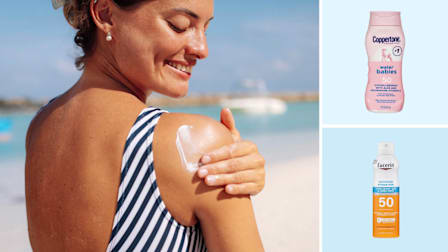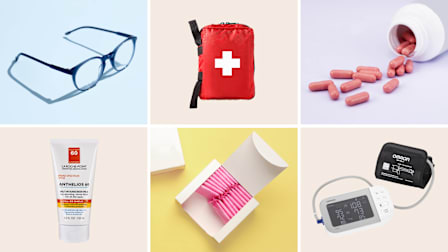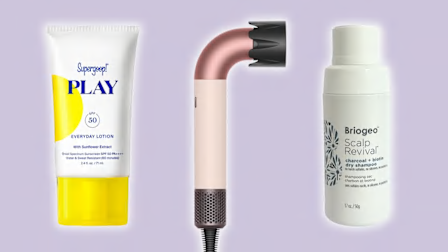Best Mineral Sunscreens of 2025
These tend to provide less sun protection, CR's tests have found, but a few are better than others
When you shop through retailer links on our site, we may earn affiliate commissions. 100% of the fees we collect are used to support our nonprofit mission. Learn more.

In CR’s ratings, we categorize sunscreens by application type: spray, lotion, and stick. But they can also be divided by the type of active ingredients they contain. Mineral sunscreens—also called physical or natural sunscreens—and chemical sunscreens are both designed to protect against skin-damaging UV rays, but the two types do so differently.
Mineral Sunscreens vs. Chemical Sunscreens
Many people prefer to use mineral sunscreens instead of chemical ones for safety and environmental reasons.
In 2019, the FDA called on sunscreen manufacturers to provide more safety data on the chemical active ingredients. The agency said it was satisfied with the information it had on titanium dioxide and zinc oxide. The issue with the chemical active ingredients was that two FDA studies showed they could get into the bloodstream through the skin. This led to concerns that they weren’t safe to use. But the FDA and many dermatologists say that’s not the case and that people should continue to use sunscreen.
Mineral sunscreens are also thought to be less harmful to coral reefs and other ocean life compared with chemical ones. That’s a major reason why the better mineral sunscreens in our tests get CR’s Green Choice designation, highlighted with a green leaf icon in our ratings. Some people also find that chemical sunscreens irritate their skin.
Given all these unresolved issues, why not just opt for mineral sunscreens?
According to CR’s sunscreen tests, mineral sunscreens simply don’t provide the same level of sun protection as many (but not all) chemical ones do.
“None of the mineral-only or mineral-plus-chemical products in our current crop of sunscreens were highly rated,” says Susan Booth, who leads Consumer Reports’ sunscreen testing. “In fact, CR’s testing has never found a mineral sunscreen that came in at the top of the ratings. Most of them hover in the middle of the pack, or even lower.” Some mineral sunscreens provide adequate SPF protection but not enough broad-spectrum protection, or vice versa. All of the sunscreens CR recommends have chemical active ingredients.
How CR Tests Sunscreens
We use the FDA’s sunscreen testing protocol as a model. But as with all products, we do our own scientific, laboratory-based testing to identify differences in performance and give consumers a comparative evaluation. We buy sunscreens at retailers the way consumers do and test three samples of each product, each from different manufacturing batches. For SPF, we test the sunscreens on three people, which is fewer than the FDA’s protocol calls for, but we use a statistical analysis to verify our results. A technician applies a standard amount of each product to a 2x3-inch rectangle on a panelist’s back. (If the product is water-resistant, they soak in water for 40 or 80 minutes based on the product’s resistance claims.) Then we expose smaller sections of the rectangle to five or six intensities of simulated sunlight based on how quickly the panelist’s skin burns without protection. We also use a reference sunscreen with known performance to ensure accuracy. A day later, a technician examines the skin for redness and determines the sunscreen’s SPF.
To test for UVA, we apply sunscreen to plastic plates, expose them to UV light, and measure the amount of UVA and UVB rays that are absorbed. This test, like the UVA test in Europe, uses a process similar to the one the FDA requires. But the test we use allows us to determine the degree of UVA protection, while the FDA test does not. The FDA test is pass-fail; a sunscreen that just passes gets the same designation—broad-spectrum—as one that screens out even more UVA. Our ratings are developed from the average results of all the SPF and UVA tests for a sunscreen, as well as how much the average CR-tested SPF varies from the SPF listed on the label.
Best Mineral Sunscreens
If you’re concerned about chemical exposure for yourself or the environment, or you have sensitive skin and prefer to use a mineral sunscreen, we think the products below are acceptable, although they’re far from being the top performers in our sunscreen tests.
@consumerreports Remember: Use separate products to protect yourself against the sun and itchy bug bites ☀️🦟 See other expert advice through the link in our bio. #skintok #summertips #sunscreen #sunscreentips #insectrepellent #insectrepellant
♬ original sound - Consumer Reports - Consumer Reports
































